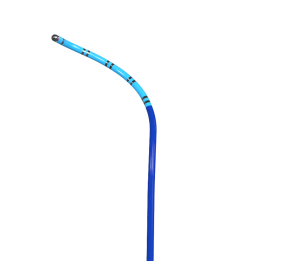Decapolar Catheters: Transforming Treatment with Advanced Mapping Capabilities
Advancements in technology continue to drive innovation and improve patient care. One of such breakthrough is the decapolar catheter, a powerful tool that has transformed treatment with its advanced mapping capabilities. This article will delve into the benefits and features of decapolar catheters, focusing on the SinusFlex™ Steerable Decapolar Mapping Catheter by APT Medical. This catheter provides hospitals and medical professionals with efficient and dependable coronary sinus (CS) mapping, streamlining processes and improving patient outcomes. Its unique spatial curve and outstanding design are patented.

Patented Spatial Curve
A novel spatial curve on the SinusFlex™ decapolar mapping catheter makes it simple to reach the Coronary Sinus Ostium (CSO). This innovative design allows healthcare professionals to navigate challenging anatomical variations with ease, simplifying the placement of the catheter. Excellent quality signals are ensured by the transition between the electrodes and the catheter, which provides precise mapping data for proper diagnosis and treatment planning.
Various Stiffness Design
Decapolar catheters need to strike a balance between safety and support during procedures, and the SinusFlex™ delivers in this aspect. This catheter maintains patient safety while offering the required support thanks to its varied stiffness design. The stainless steel braided structure offers excellent pushability and torqueability, allowing for precise catheter manipulation and positioning during mapping procedures.
Conclusion
Because the SinusFlex™ decapolar mapping catheter is appropriate for the femoral vein approach, there are a number of benefits for both patients and healthcare providers. By utilizing this approach, the radiation exposure to physicians is reduced, promoting a safer working environment. Additionally, by avoiding the complications that come with the superior vena cava (SVC) approach, patient safety is further improved and the risk of procedural complications is decreased.
